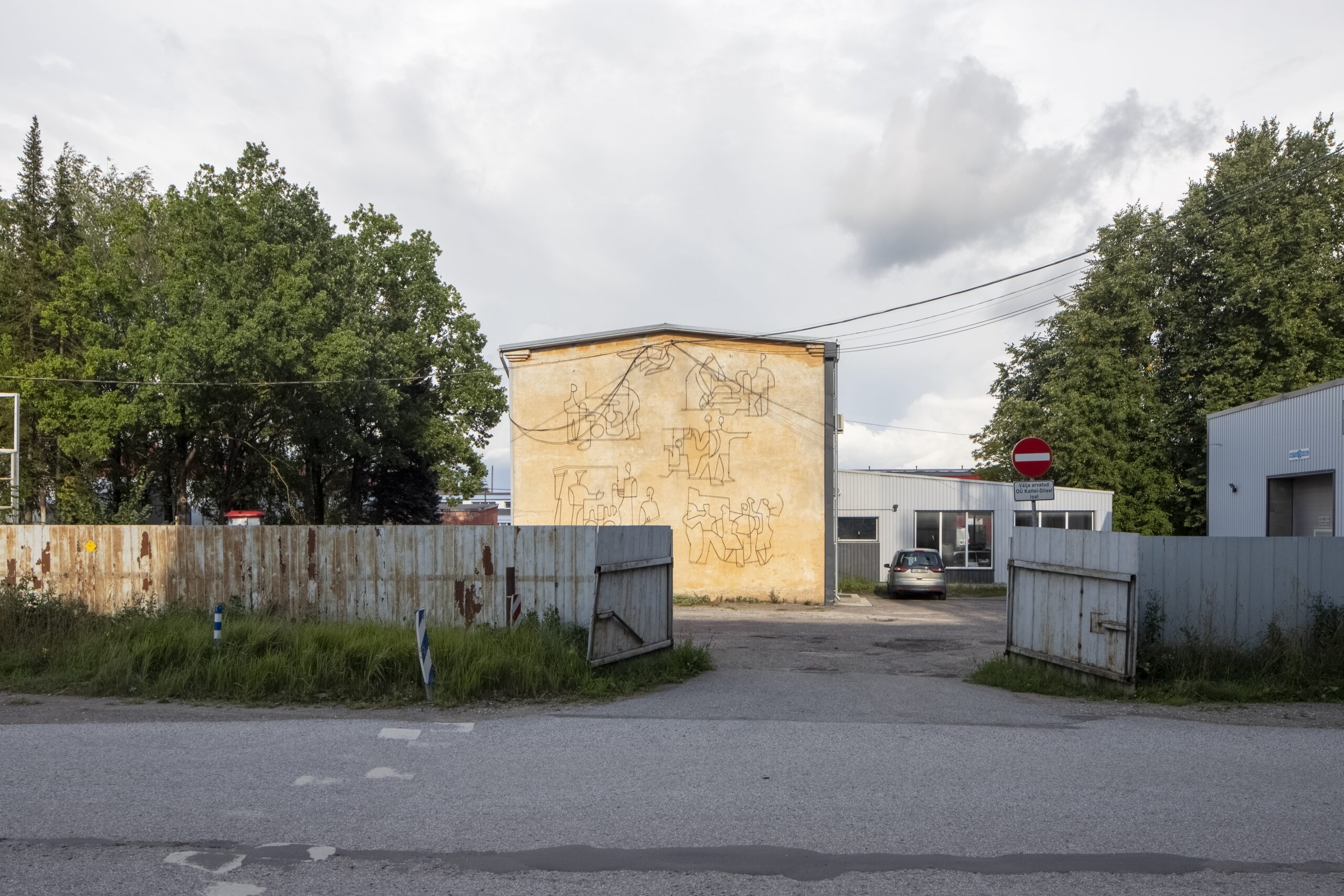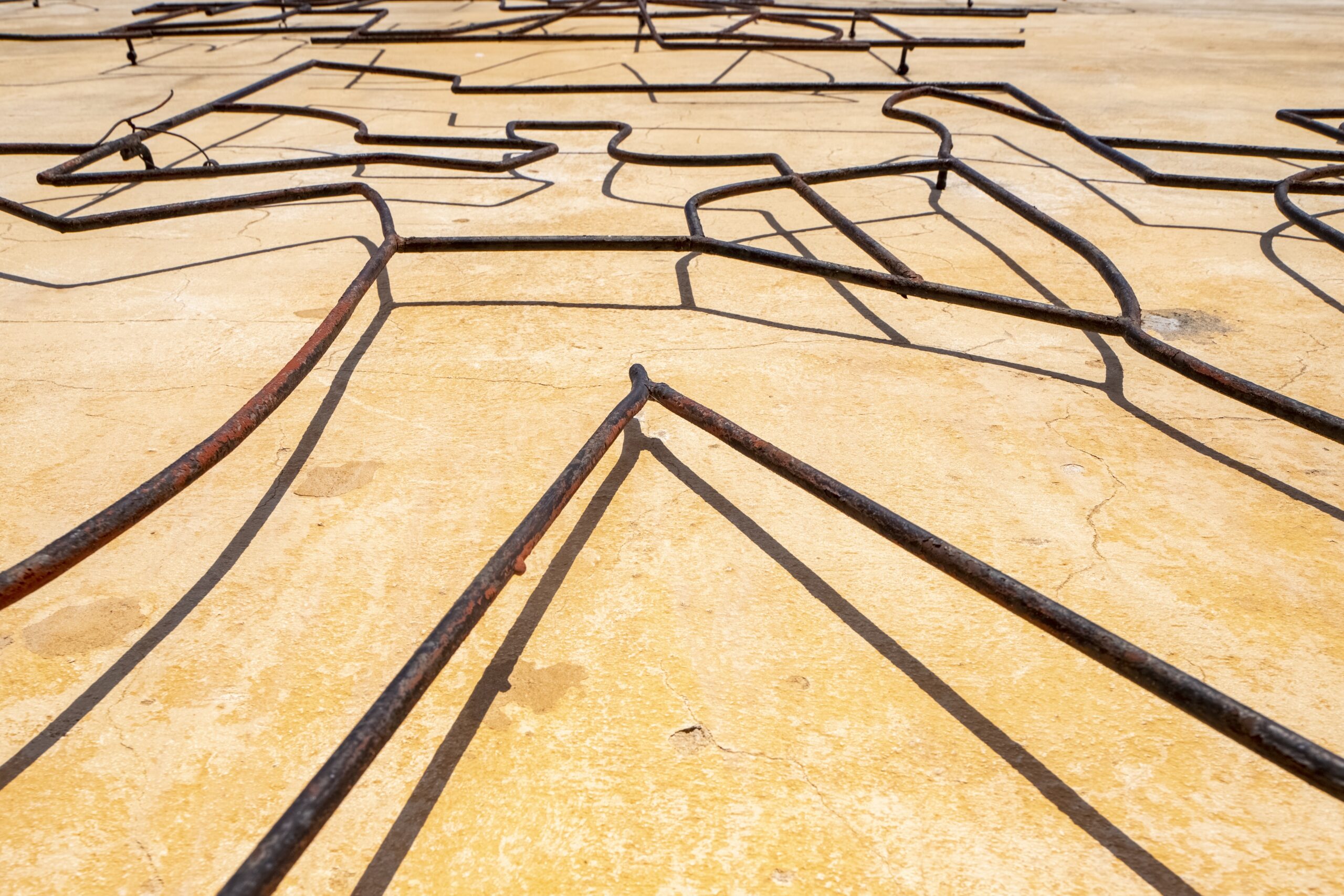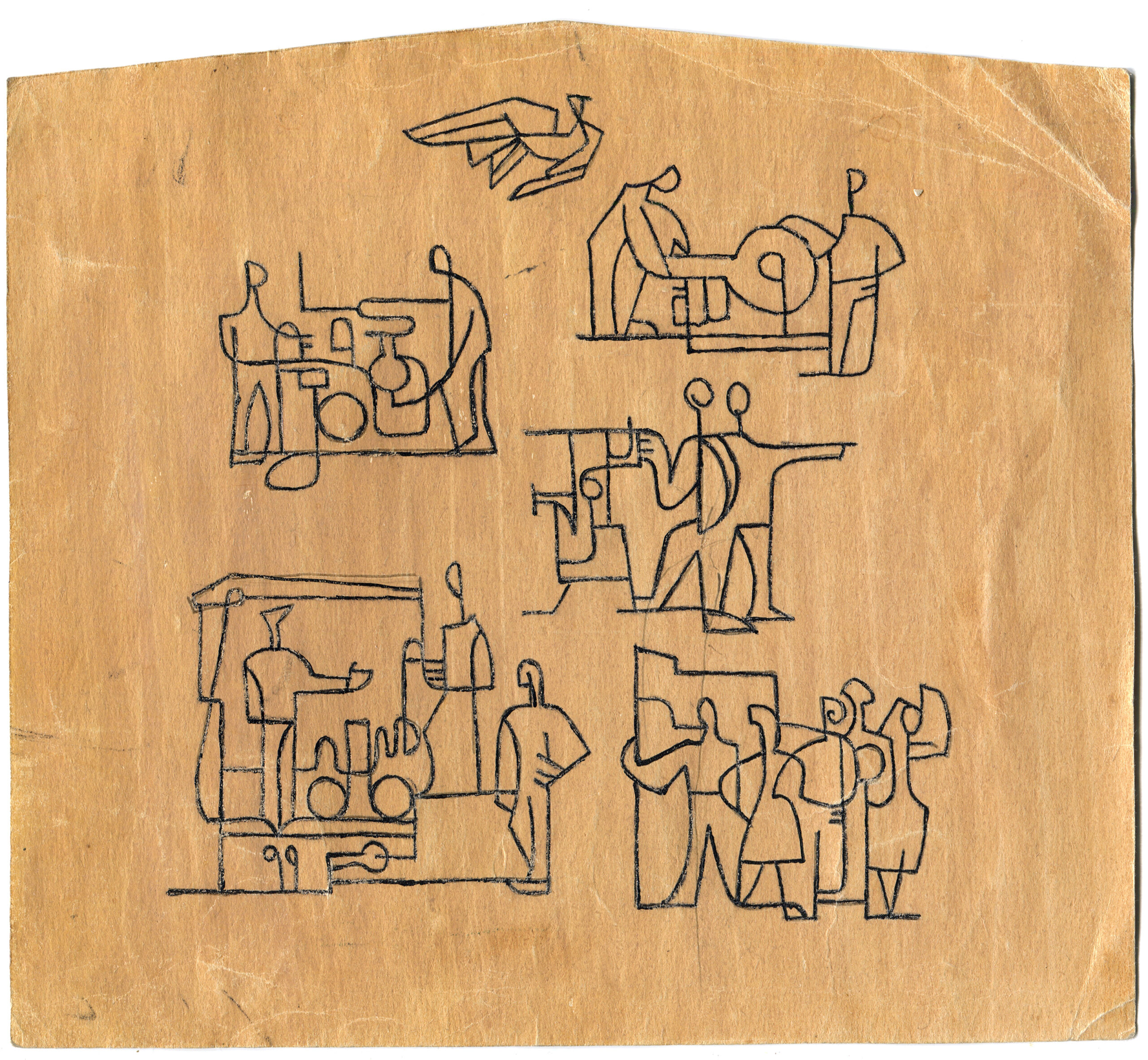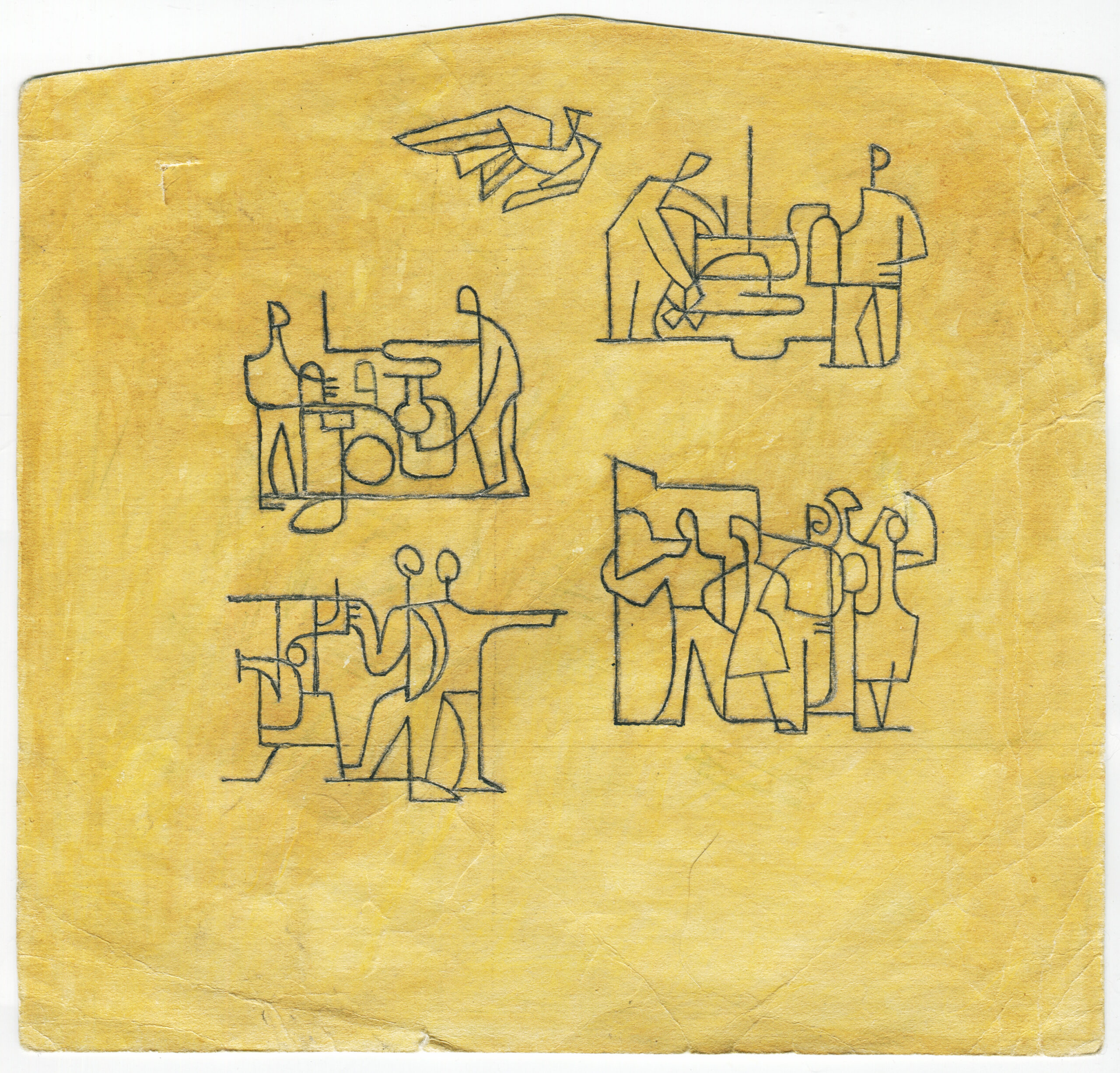Figures on the Former Testing-Repair Factory’s Wall
Decade of completion: 1960s
Address: Tartu County, Tartu, Vasara 52b
Author: Lembit Saarts
Bent metal rods
Not listed as a cultural monument
The author of the mysterious metal figure on the property of Tartu Testing-Repair Factory was unknown for a long time. It was proposed that the composition could have been a personal undertaking, that the national commission of art inspired the decision to create something similar within the community. Initially, the stickmen that have the impression of a naïve drawing done by a child are not difficult to disregard as a hobby activity, but upon further inspection, one can see a masterfully balanced composition and fascinatingly executed details. Indeed, the author of the suspiciously skilfully designer group of figures turned out to be Lembit Saarts – a multifaceted Pallas graduate and a classic of 20th century Modernism.
Lembit Saarts (1924-2016) entered the German Era Pallas University of Applied Sciences as a young man, continued in the Soviet Era Tartu National Art Institute and finally the Sparta-like school of life that was the Kazakhstan Concentration Camp. The six years spent in the camp only increased Saarts’s thirst for art, and shortly after release he belonged to the first unofficial post-war art grouping, along with Ülo Sooster, Valve Janov, Lüüdia Vallimäe-Margi, Kaja Kärner, Silvia Jõgeveri, and Heldur Viires, which changed and refreshened the Estonian art scene substantially.
Aside from the underground artistic activity, it was still necessary to make a living, which Lembit Saarts did in Tartu as the drawing teacher at a pedagogical school and an art school, and as an artist at the testing-repair factory. Saarts’s task in the factory was to take care of its aesthetic side, which meant both the designing of posters and promotions, and the organisation and planning of monumental-decorative arts onto the factory grounds. The figures bent out of metal rods depict fields of operation undertaken in the factory in a cubist outline favoured by Saarts, and are balanced by an abstract composition of the obligatory socialist peace dove. Slightly rusty and deformed in some places, the group of figures has survived on the factory grounds to this day, being one of the most unique, and pure in form, compositions among the decorative art of Soviet Tartu.
Anu Soojärv












